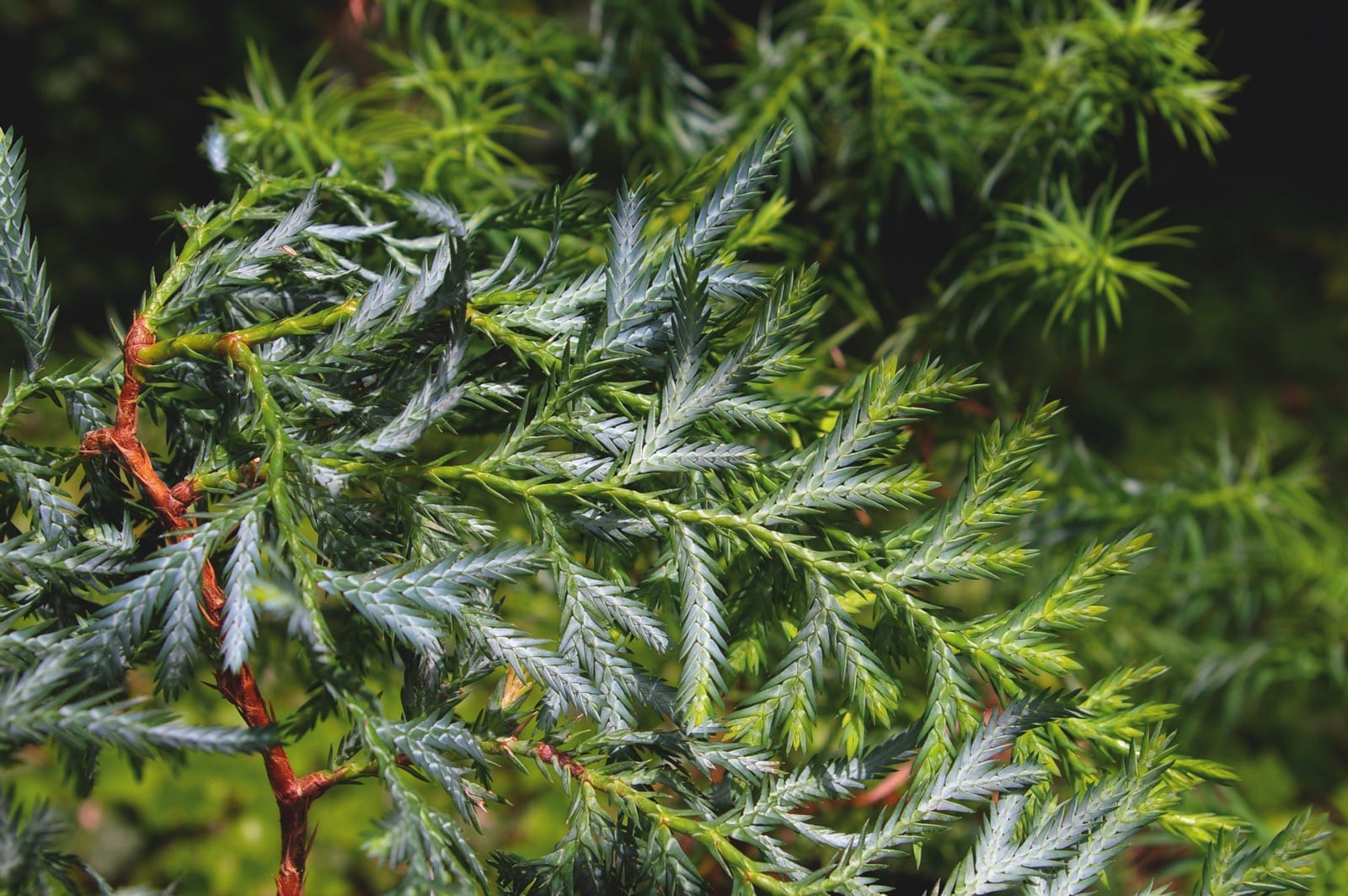Xanthocyparis
Credits
Article from New Trees by John Grimshaw & Ross Bayton
Recommended citation
'Xanthocyparis' from the website Trees and Shrubs Online (treesandshrubsonline.
Family
- Cupressaceae
Common Names
- Golden-cypresses
Xanthocyparis is the most recently described conifer genus, X. vietnamensis having been discovered in northern Vietnam in 1999 (Farjon et al. 2002, Farjon 2005c). DNA and morphological studies indicated that its closest relative was the North American Nootka Cypress, Chamaecyparis nootkatensis, which was subsequently transferred into Xanthocyparis (Farjon et al. 2002, Little et al. 2004), and the close relationship between these two remains undisputed. They are medium-sized to large evergreen trees, X. nootkatensis reaching 30 m tall, with a remarkably regular, conical crown, while X. vietnamensis reaches 15 m at most, with an irregular or flat-topped crown. The bark peels into stringy, longitudinal strips. Branching is rather irregular, and the primary branches are often pendulous; the leader shoot is pendent. The juvenile leaves are linear and the mature leaves are scale-like. This is rather common in the Cupressaceae; in X. vietnamensis, however, juvenile, mature and transitional leaves may all occur on branches of the mature tree, and this feature occurs naturally in only a few other taxa (for example, Callitris macleayana (F. Muell.) F. Muell., and Juniperus chinensis) – though it may also result from mechanical damage such as coppicing. Juvenile leaves are radially arranged in alternate whorls of four, while transitional leaves are decussate. The mature leaves are decussate and strongly dimorphic in shape and size, with the lateral pair flattened and arranged on a plane. This characteristic, common in the Cupressaceae, results in the leaf-covered branchlets appearing to be bilaterally flattened. The male strobili are terminal and solitary, on lateral branchlets with small, mature scale leaves. The female cones are terminal and solitary, on lateral branchlets with regular scale leaves. The cones are roughly spherical, mature in two years, and change from blue-green to purplish brown. The seed scales are arranged in two (or rarely three) decussate pairs, fused at the base. The scales have a prominent, central umbo, and at maturity open to release the seeds. The seeds are flattened and have two lateral wings. The two species of Xanthocyparis can be easily separated by their distinct habits and by the mixture of leaf types on mature branches of X. vietnamensis; in reality, confusion is anyway unlikely, as X. vietnamensis is virtually unknown in cultivation while X. nootkatensis is extremely common.
Hardly had the genus Xanthocyparis been erected than arguments began over its name. Little et al. (2004) claimed that X. nootkatensis had previously been placed in the genus Callitropsis Oerst. (non Callitropsis Compton), and that in consequence this name had priority over Xanthocyparis, rendering the genus Xanthocyparis Farjon & Hiep illegitimate if it contains X. nootkatensis. However, the combination Callitropsis nootkatensis was not validly published by Oersted in 1865 (who only suggested in a footnote that the Nootka Cypress might belong here), and the combination Callitropsis nootkatensis (D. Don) Florin was only made in 1979. The name Callitropsis in Oer-sted’s rather confused sense had lain completely forgotten until resurrected by Florin, and then by Damon Little and his colleagues; in the meantime, however, the name Callitropsis had been applied by Compton in 1922 to a genus of conifers endemic to New Caledonia (now correctly Neocallitropsis). On its ‘rediscovery’, Callitropsis should have been regarded as a nomen confusum (and indeed nomen ambiguum), and should have been abandoned. Instead, Little (2006) picked it up and ran with it, insisting on its priority over Xanthocyparis and adopting it (on the grounds of the inclusion within it of C. nootkatensis) as the generic name for his segregation of American Cupressus from Eurasian Cupressus, resulting in the publication of 19 new names in Callitropsis for the American cypresses and X. vietnamensis (see also pp. 290–291) – the name Callitropsis for these trees has already become widely adopted by botanists and gardeners in North America (D. Hinkley, pers. comm. 2007).
A proposal to conserve the name Xanthocyparis over Callitropsis (Mill & Farjon 2006) was quickly submitted to the Committee for Vascular Plants of the International Association of Plant Taxonomists (the body that adjudicates on matters of disputed botanical nomenclature). This panel decided in favour of Xanthocyparis (Brummitt 2007), on the grounds that Callitropsis has most widely been used in Compton’s sense, as a name for the New Caledonian Neocallitropsis, and for the sake of stability in the nothogeneric name of the Leyland Cypress, which can now become ×Cuprocyparis (a relatively small change from the familia ×Cupressocyparis). The result is that Xanthocyparis must be used for any genus including the Nootka Cypress – there are times when it is easiest to take refuge in vernacular names – unless this reverts to its original name, Cupressus nootkatensis D. Don, as some would suggest. If anyone holds a strong enough view that the American cypresses are indeed distinct from the Eurasian taxa, the way is now open to make all of them Xanthocyparis, including ×C. leylandii. As mentioned on p. 292, however, several authors consider that the two golden-cypresses are best recognised as Cupressus (Silba 2005, Xiang & Li 2005, Rushforth 2007).

